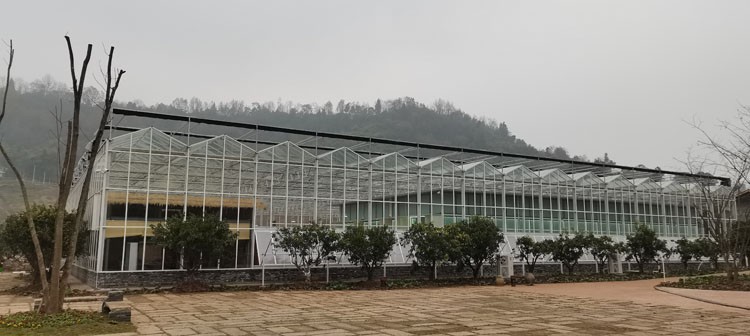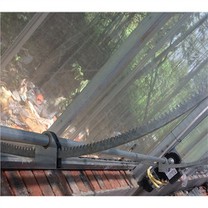Rescue measures for severe water accumulation in vegetable greenhouses
Natural disasters such as torrential rain and typhoon in summer are serious, causing the vegetables in agricultural greenhouses to suffer varying degrees of flooding. So, what water and fertilizer self-rescue measures should agricultural greenhouses take to reduce losses caused by floods?
1. Clean up ditches and drain water
When the vegetable field is flooded, the toxic substances will increase, and the vitality of the root system will decline, which will affect the growth of the plants. After the flood recedes, it is necessary to quickly dig ditches, repair the drainage pipes of agricultural greenhouses, remove underground water, and lower the groundwater level. If the amount of water inflow is large, intertillage should be carried out after 2-3 days of drainage to loosen the soil to accelerate the oxidation of the soil and promote the recovery of vegetables. At the same time, topdressing with bio-fertilizer improves the soil environment and provides lost nutrients to promote root growth.
2. Well water irrigation, lime disinfection
When the topsoil after intertillage begins to dry, use well water to irrigate and flush the soil. Do not irrigate with well water immediately after drainage to avoid root retting. When the amount of rainwater pouring into the greenhouse is less, well water irrigation can be used immediately. For the severely affected vegetable fields, vegetables with dead roots should be cleaned up in time, 25-30 kg of lime per mu should be applied for disinfection, and the soil should be carefully prepared.
3. Understand the disaster situation and deal with it by classification
Understand the disaster situation and deal with it by category. For some vegetables such as eggplant, pepper, and winter melon that are heavily flooded but still have the ability to absorb water, you can cut off the dense branches and leaves on the ground, and use sunshade nets for short-term shading to prevent sudden sunshine after flooding Sun exposure reduces transpiration and prevents wilting caused by physiological dehydration. For other melon vegetables, some yellow leaves, rotten leaves, and old leaves can be cut off, and proper cultivation, soil cultivation, and vine pressing can be done to promote root development and restore plant growth. For beans and leafy vegetables, spray water to wash the leaves, wash away the sludge attached to the leaves, and restore the photosynthesis and respiration of the leaves. At the same time, carry out inter-cultivation in the field to prevent soil compaction caused by flooding, resulting in root hypoxia and physiological root rot.








